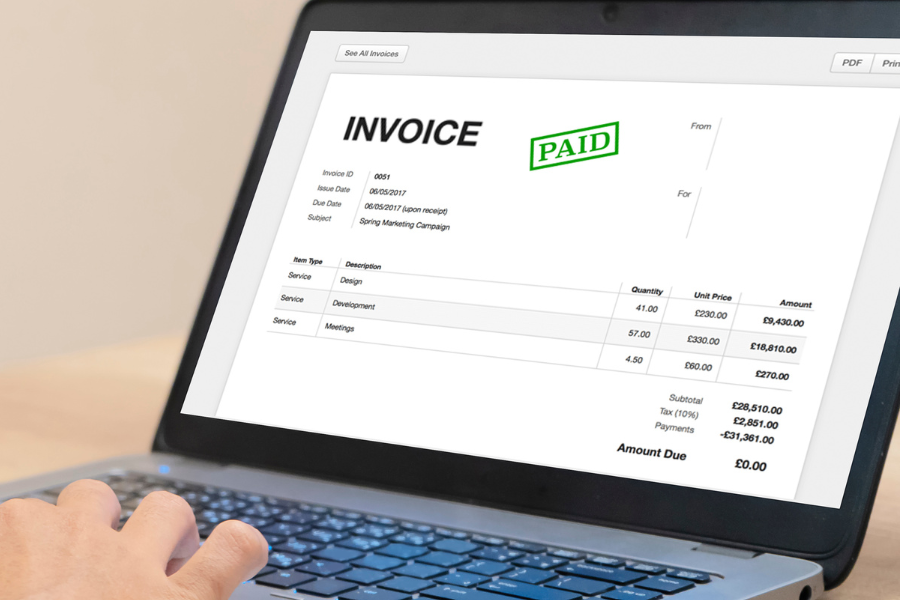The way businesses handle invoicing is undergoing a radical transformation, especially in the Asia-Pacific (APAC) region. E-invoicing, once considered a niche solution, is now becoming a necessity for businesses of all sizes. From government mandates to the growing need for operational efficiency, the shift to digital invoicing is creating a ripple effect across industries.
But why is this change happening so quickly, and what are the forces driving it? In this blog, we’ll dive deep into the key trends shaping e-invoice adoption in APAC, uncovering why it’s not just a trend but a critical business imperative. Whether you’re a small enterprise looking to simplify processes or a multinational aiming to stay compliant with evolving regulations, understanding these trends will help you navigate the future of digital invoicing with confidence.
E-invoicing isn’t just about digitizing paper invoices—it’s about redefining the way businesses operate. Let’s explore the major factors propelling its adoption and how they are reshaping the APAC business landscape.
1. Government led Mandates are Accelerating E-Invoicing Adoption
Government intervention is a key driver of e-invoicing adoption in Malaysia, Indonesia, and Australia, as part of broader tax reform and digitization strategies.
- Malaysia: The Inland Revenue Board (LHDN) is rolling out a nationwide e-invoicing system starting in 2024, aimed at improving tax compliance and reporting transparency.
- Indonesia: The DJP’s mandatory e-Faktur system ensures VAT compliance and reduces fraud, with plans to expand its reach to smaller businesses.
- Australia: Using the PEPPOL framework, Australia is promoting e-invoicing to reduce costs and enhance efficiency, with potential future mandates under consideration by the Australian Taxation Office (ATO).
These initiatives are transforming compliance into a competitive advantage, encouraging businesses to adopt e-invoicing to improve operational efficiency and stay ahead in increasingly digital markets.
2. Digital Transformation is a Strategic Priority
Digital transformation has become a top priority for organizations across APAC, driven by the need for efficiency, scalability, and improved customer experience. E-invoicing is a key enabler of this transformation, helping businesses move away from cumbersome paper-based processes.
Companies are investing in cloud-based e-invoicing solutions to:
- Automate invoice processing and reduce manual errors.
- Ensure faster invoice approvals and payments.
- Improve cash flow visibility and forecasting.
Adopting e-invoicing also aligns with broader ESG (Environmental, Social, and Governance) goals by minimizing paper usage and supporting sustainability initiatives, which are becoming increasingly important for investors and stakeholders.
3. Cross-Border Trade is Driving Standardization
The APAC region is home to some of the world’s largest trading economies, including China, Japan, and Australia. Cross-border trade presents a unique challenge due to varying invoicing standards, languages, and tax regulations.
Efforts to harmonize e-invoicing standards, such as the Pan-European Public Procurement Online (PEPPOL) framework, are gaining traction in APAC. Countries like Singapore, Australia, and New Zealand are already leveraging PEPPOL to enable seamless cross-border transactions.
Standardization is crucial for simplifying trade, reducing processing times, and ensuring compliance across multiple jurisdictions. As more countries adopt common frameworks, businesses are encouraged to integrate e-invoicing to remain competitive in global markets.
4. Rising Demand for Cost Efficiency and Automation
Businesses across APAC are under pressure to optimize operations and reduce costs. Traditional invoicing methods are not only slow but also expensive due to printing, mailing, and storage costs.
E-invoicing addresses these pain points by:
- Reducing the cost of processing invoices by up to 80%.
- Enabling faster dispute resolution through automated workflows.
- Allowing real-time tracking of invoice statuses.
For SMEs, who often operate on thin margins, the cost savings associated with e-invoicing can be transformative. Large enterprises, on the other hand, see it as an opportunity to scale operations without increasing administrative overheads.
5. Emerging Technologies are Enhancing E-Invoicing
The integration of advanced technologies such as artificial intelligence (AI), blockchain, and robotic process automation (RPA) is taking e-invoicing to the next level. These innovations address common challenges like fraud prevention, data accuracy, and process efficiency.
- AI is being used to extract and validate invoice data, minimizing human intervention.
- Blockchain ensures secure, tamper-proof records, which are critical for compliance.
- RPA automates repetitive tasks like data entry, freeing up resources for strategic initiatives.
These technologies not only enhance the functionality of e-invoicing systems but also make them more attractive to businesses looking to future-proof their operations.
6. COVID-19 Accelerated the Shift to Digital
The COVID-19 pandemic highlighted the limitations of traditional invoicing processes. With remote work becoming the norm and supply chains facing unprecedented disruptions, businesses had to pivot to digital solutions to maintain continuity.
E-invoicing played a vital role in ensuring that businesses could:
- Process invoices remotely without relying on physical documents.
- Adapt to fluctuating payment cycles and manage cash flow more effectively.
- Meet the compliance requirements of rapidly changing tax policies during the pandemic.
This shift has had a lasting impact, with many organizations choosing to continue with digital-first approaches even as normalcy returns.
7. Increasing Focus on Compliance and Fraud Prevention
Tax authorities across APAC are adopting e-invoicing to strengthen compliance and reduce tax evasion. By mandating real-time reporting and validation of invoices, governments can ensure that businesses are accurately reporting their financial transactions.
For example, the GSTN (Goods and Services Tax Network) in India enables real-time invoice matching to detect discrepancies and prevent fraudulent claims. This has encouraged businesses to adopt robust e-invoicing solutions that integrate seamlessly with tax portals and ensure compliance.
Conclusion: Why Choose Advintek for Your E-Invoicing Needs?
E-invoicing is no longer just a compliance requirement—it’s a strategic tool for businesses looking to streamline operations, reduce costs, and stay competitive in an increasingly digital economy.
At Advintek, we understand the complexities of the APAC market and offer tailored e-invoicing solutions designed to meet the unique needs of businesses across the region. Our platform is equipped with:
- Seamless integration capabilities with existing ERP systems.
- Advanced features like AI-driven data validation and real-time compliance monitoring.
- Scalability to support businesses of all sizes, from SMEs to large enterprises.
As governments and businesses continue to drive e-invoicing adoption, now is the time to invest in a solution that not only meets today’s requirements but also prepares you for the future.
Explore the possibilities with Advintek and transform the way you manage invoicing.









